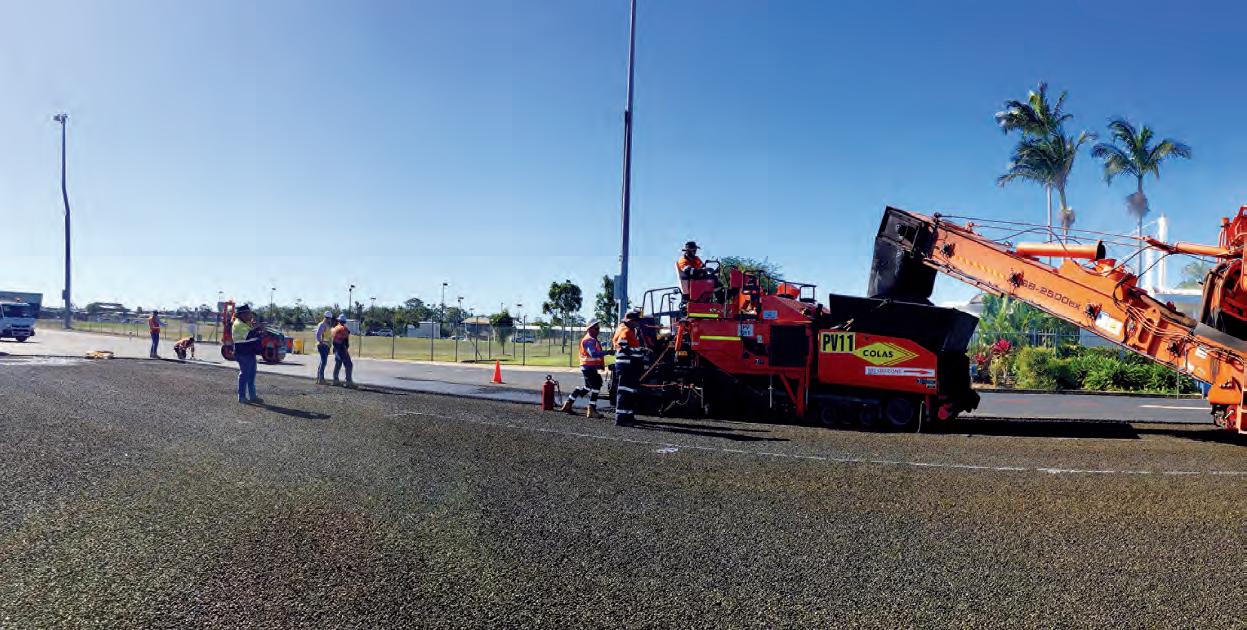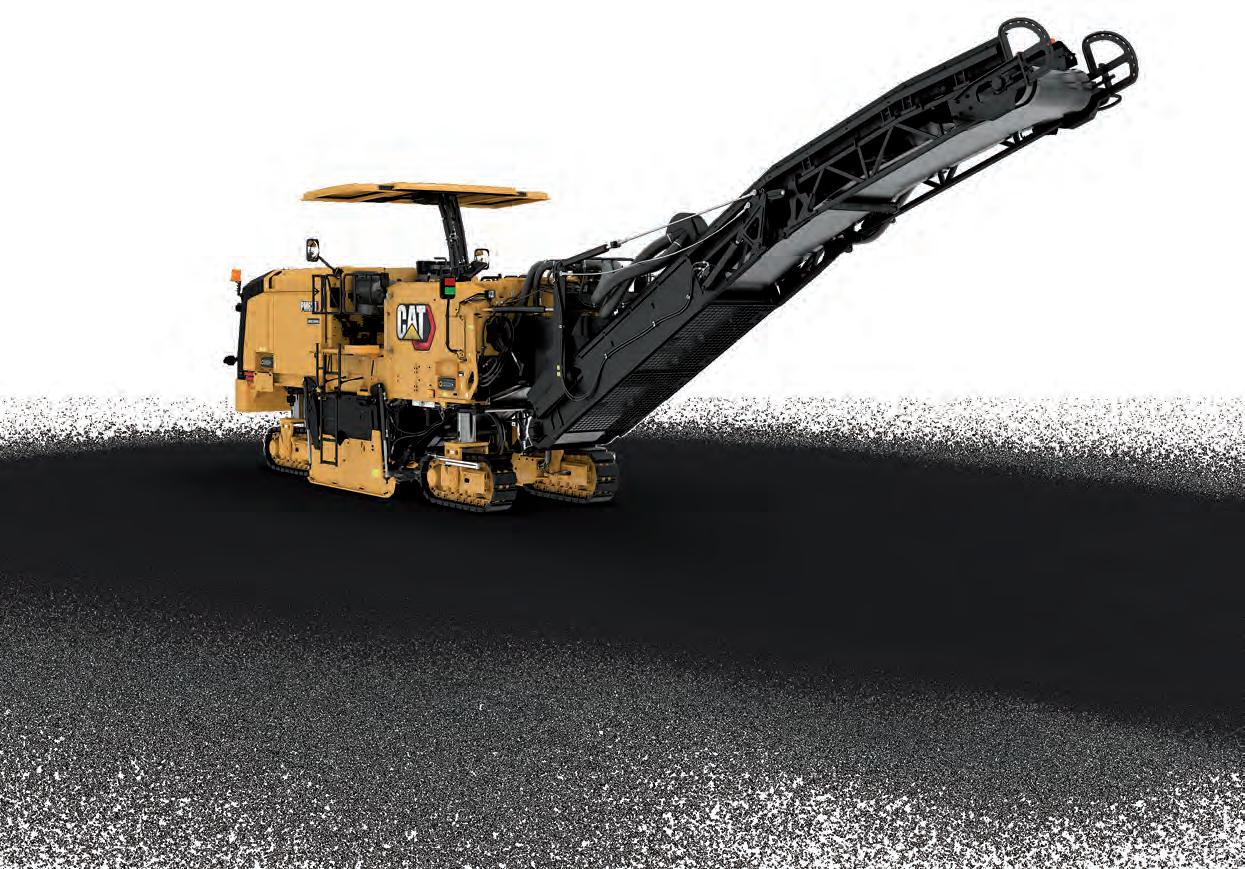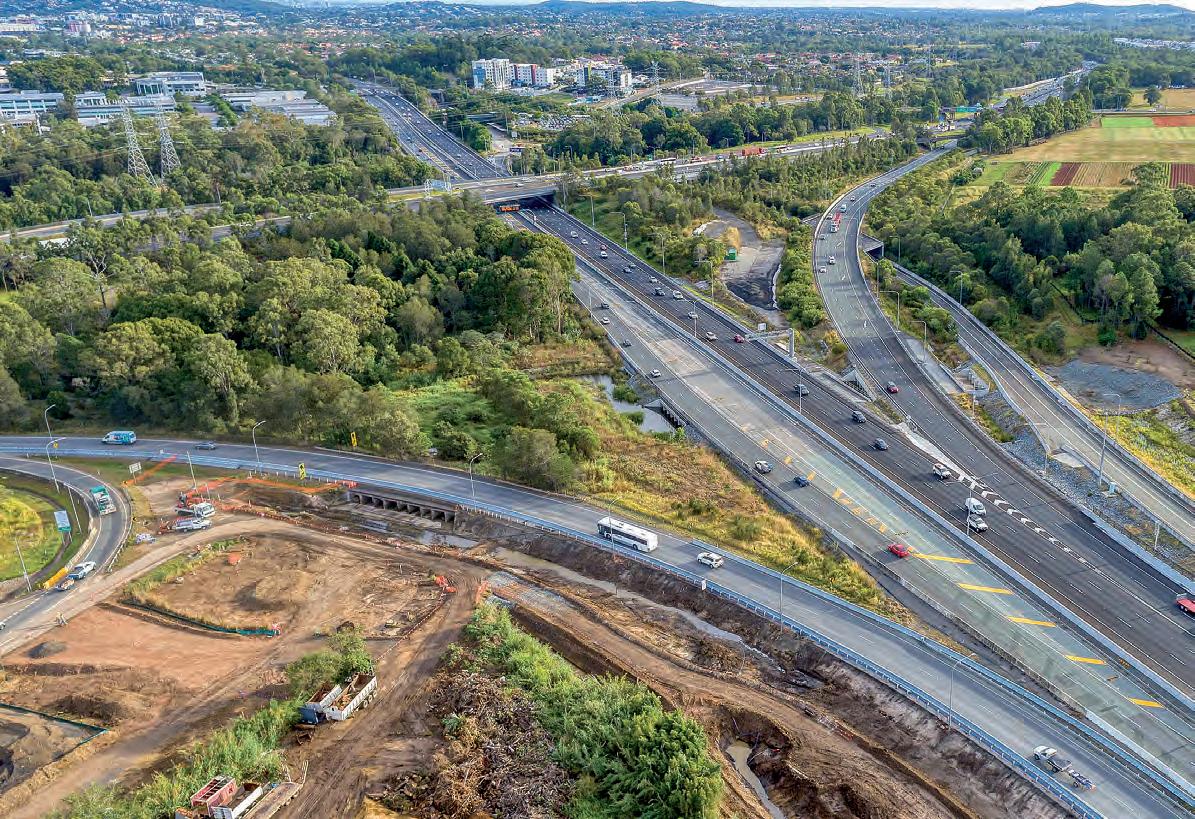THE FUTURE
IS FOAM
HIWAY STABILISERS IS USING FOAMED BITUMEN TO IMPROVE ROAD PAVEMENTS ACROSS AUSTRALIA AND PERFECTING TECHNIQUES TO PROVIDE STANDARD AND BESPOKE SOLUTIONS FOR MAINTENANCE AND CONSTRUCTION PROJECTS.
O
ver the past decade Hiway Stabilizers has laid over four million square metres of foamed bitumen which equates to around two thirds the size of the entire Sydney Olympic Park, measuring 6.5 million square metres. The company has been refining foamed bitumen technology for nearly 20 years, working to provide the road industry with the benefits of the process for pavement rehabilitation or new applications. Allen Browne, Hiway Group Technical Director, says Hiway Stabilizers effectively started developing foamed bitumen in the early 2000s. The results of trials completed in 2003 prompted the company’s investment in two of Wirtgen’s state-of-theart pavement recyclers, to expand works. “Using Wirtgen machines, Hiway Stabilizers has been able to build a quality track record for rural and urban settings, in diverse environments across Australia, New Zealand and Fiji,” Mr. Browne says. Foamed bitumen recycling is a pavement rehabilitation process involving the mixing
of foamed bitumen with existing pavement materials to produce a high quality, durable and flexible pavement layer with similar performance to traditional asphalt. In this process imported aggregates can also be treated, either independently or blended with existing aggregates. “Foamed bitumen is created by injecting a small amount of water into hot bitumen, around 175 to 190 degrees Celsius, and offers a holistic, fast and costeffective alternative for road pavement rehabilitation. The principal is based on the bitumen being at such a temperature that the water vaporizes and the bitumen foams, expanding up to 15 times its original volume,” Mr. Browne says. “This expansion process occurs inside the rotor chamber where the foamed bitumen can then be immediately and thoroughly mixed with the pavement material.” Mr. Browne says in its expanded state the bitumen disperses very well forming thousands of ‘spot welds’ and results in visco-elastic performance, which can be
Hiway Stablizers started developing foamed bitumen in the early 2000s.
28
ROADS JULY 2020
similar to asphalt. The company has undertaken around 1.5 million square metres of foamed bitumen projects in Australia. This includes projects in Queensland which were shown to be highly moisture resilient following extensive flooding events in the state in 2010/11 and 2013. This work was done by Hiway Group in the areas of Townsville, Rockhampton, Mackay and Cairns. “For those programs of work in Queensland, Hiway Stabilizers led the charge and undertook around 250,000 square metres of foamed bitumen stabilisation works,” Mr. Browne says. These projects come in addition to the nearly three million square metres of foamed bitumen works the company has undertaken in New Zealand and 200,000 square metres of work in Fiji. “A key driver for Hiway Stabilizers in developing the foam programme has been the range of benefits that can be derived from using the product,” Mr. Browne says. “Hiways has a strong focus on reducing


















